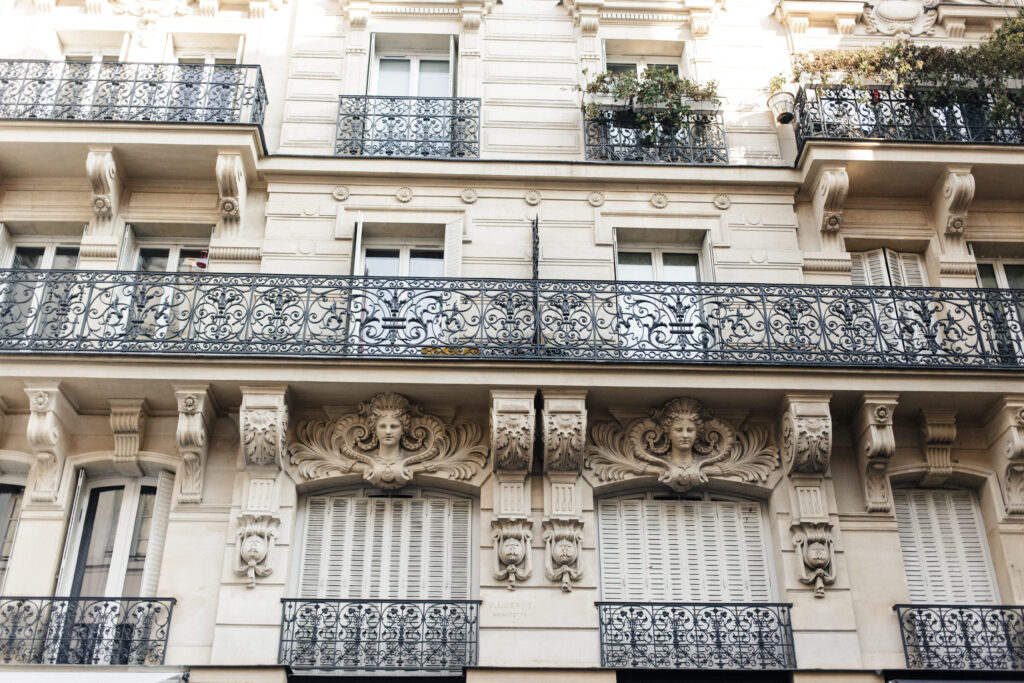Our tour of the arrondissements continues! Today we’re exploring the 3e arrondissement, known as Temple. This name comes from the Knights Templar, a religious order who used to own the land that is now the 3e arrondissement. The Knights Templar may have been eradicated centuries ago, but their influence on this area of Paris remains to this day.
Square du Temple – Elie Wiesel
In the heart of the 3e arrondissement there is a beautiful public park, complete with a small pond. This park marks the former location of the fortress that served as the Knights Templars’ European headquarters between the 13th and 14th centuries. Later, during the French Revolution, this building was used as a prison for the French royal family between 1792 and 1795. The fortress was demolished by Napoléon Bonaparte in 1808, as it had become a rallying point for royalists, and the area was finally transformed into the beautiful Square du Temple in the mid-19th century. It remains a public park to this day.
Museums!
The 3e arrondissement may be the second smallest in Paris, but it packs a lot into such a small space. In particular, its list of museums is very impressive. The Musée Carnavalet is widely considered to be one of the best free museums in Paris. The Musée des Arts et Métiers houses over 80,000 pieces related to the history of science and design, including early prototypes for airplanes and the original Foucault pendulum. And the Musée Picasso is an entire museum dedicated to the famed Spanish painter. The 3e arrondissement is truly a feast for museum lovers.
Marché des Enfants Rouges
The Marché des Enfants Rouges is the oldest covered market in Paris, having opened in 1615 under the orders of King Louis XIII. The name, Market of the Red Children, came from its proximity to a nearby orphanage where the children wore red uniforms. The orphanage has long since ceased operations, but the market is still going strong. Locals use it to pick up their daily fresh produce, and dozens of food stalls will ensure you won’t go hungry. Just be sure to get there early. This market is popular for a reason and seats go quickly!
Nicolas Flamel
The building that stands at 51 rue de Montmorency is widely considered to be the oldest surviving private residence in Paris. It was built in 1407 by Nicolas Flamel, a wealthy Parisian of the 14th and 15th centuries. Flamel was particularly noted for his philanthropy, and he built this home specifically to house the homeless of Paris. And yes, in case you are wondering, this is the same Nicolas Flamel that history has cast as the famed alchemist who discovered the philosopher’s stone and the secret of immortality. A story that first entered popular imagination several centuries after his death and has no basis in historical fact. Unfortunately.
Hidden Gems
The Defender of Time – This elaborate automated clock once featured a man holding a sword who would do battle with a dragon, rooster, and crab every hour. Yes, really. Sadly, the automations haven’t worked for 20 years, and recently, the entire contraption was removed. All that remains is a hole on the wall and a plaque that serves as testimony to one of the 3e arrondissement’s more bizarre sights.
Musée de la Poupée – Speaking of bizarre, the Musée de la Poupée is a museum of dolls. And yes, it’s just as creepy as it sounds. It even has a hospital for broken dolls. Because why not?
Season – One of my favourite brunch spots in the city, hands down. The breakfast pancakes are exquisite.
Want to read more about the arrondissements of Paris? Click HERE.
Laura Moore is a professional storyteller who loves history and the many stories that make Paris one of the most fascinating cities in the world. Join one of her signature tours to learn the story of a city.




